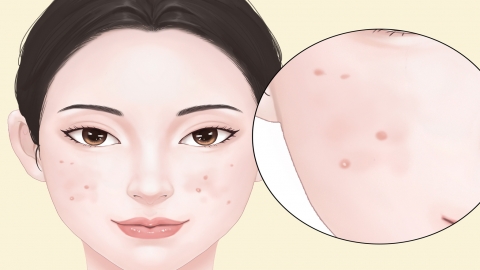What causes red veins on the cheeks?
Facial redness (telangiectasia) may be caused by emotional excitement, temperature changes, sensitive skin, allergies, rosacea, and other factors. Improvement can be made according to different situations. It is recommended to visit a hospital promptly and receive treatment under a doctor's guidance.

1. Emotional excitement: When experiencing intense emotions such as nervousness, shyness, or anger, increased adrenaline secretion in the body causes blood vessels to dilate, and the capillaries in the cheeks respond prominently, resulting in redness. At such times, it is important to learn to regulate emotions, relax the body through deep breathing, or shift attention, as the redness typically gradually subsides.
2. Temperature changes: Sudden movement from a cold environment into a warm one causes rapid expansion or contraction of facial blood vessels due to temperature differences. Over time, this can reduce vascular elasticity and lead to facial redness. When facing temperature changes, take precautions in advance, such as wearing a mask outdoors in winter, and avoid washing your face immediately with hot water after entering an indoor environment.
3. Sensitive skin: Naturally thin and sensitive skin has a vulnerable stratum corneum, making capillaries more susceptible to external stimuli and dilation, which results in visible redness. In daily routines, choose gentle, non-irritating skincare products, avoid over-cleansing, and ensure the facial cleansing water is not too hot.
4. Allergies: Individuals with allergic constitutions may develop localized allergic reactions upon facial contact with allergens such as pollen or dust mites, causing symptoms like itching, redness, swelling, and visible blood vessels. It is recommended to use medications such as cetirizine hydrochloride tablets, loratadine tablets, or ephedrine diphenhydramine tablets under medical guidance to alleviate discomfort.
5. Rosacea: Triggered by factors such as heredity and abnormal neurovascular regulation function, the main symptoms include redness, papules, and pustules on the central face, especially the cheeks, accompanied by visible blood vessels. Symptoms may worsen with heat exposure or consumption of spicy foods. Patients can use medications such as metronidazole gel, fusidic acid cream, or hydroxychloroquine tablets under a doctor's supervision to improve symptoms.
In daily skincare, choose gentle and non-irritating products, avoid those containing alcohol, fragrances, or other irritating ingredients, and maintain a light diet, which also benefits the skin.
References:
[1] Song Aolin, Yan Yuhe. Treating Rosacea from the Perspective of Blood. Journal of Chinese Physicians, 2025, 53(02): 250-252.
[2] Weng Changzhen, Liu Lijing, Lin Ang. Research Progress on Food Allergy and Anti-Allergic Immunotherapy. Journal of Pharmaceutical Research, 2025, 44(01): 48-55.




